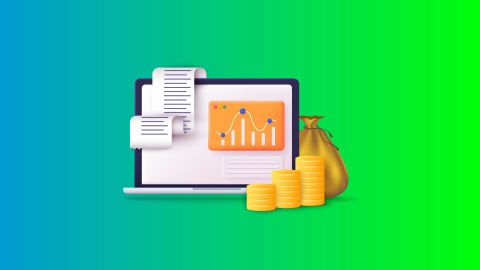Ever tried to sell something quickly but had no buyers? That’s exactly what a market without liquidity feels like. Whether you're an institutional investor moving millions or someone investing a few thousand in stocks, liquidity determines how easily and efficiently you can buy or sell assets. It influences how fast you can act, how much return you might make—or lose—and how risky your trades become. So, if you are serious about investing, understanding market liquidity isn't optional it's essential. If you want to avoid getting stuck with illiquid investments, knowing how and where to invest becomes essential especially in products that offer ease of entry and exit without price loss. Explore top-performing mutual funds.
What is market liquidity?
Market liquidity simply refers to how easily an asset can be converted into cash. The more “liquid” an asset is, the faster and cheaper it is to sell. Liquid assets, like stocks of large companies, are actively traded and have plenty of buyers and sellers. Illiquid assets, like real estate or rare collectibles, can take longer to sell and might require you to drop your price just to find a buyer. In short, liquidity reflects how smoothly and quickly you can move your money in and out of investments. If you are planning your investments, understanding liquidity helps you make smarter decisions especially when comparing assets that are easier to buy and sell without price cuts. Compare mutual fund options now.
Example of market liquidity
Let’s make this idea more concrete by comparing two real-world markets:
1. Real estate in a smaller city like Coimbatore
Imagine trying to sell a house here. You might list it for Rs. 60 lakh, but the highest offer is Rs. 55 lakh. Why? Because there aren’t many buyers. One sale can even shift market prices. This shows low trading volume, wide bid-ask spreads, and shallow market depth. In short—poor liquidity.
2. A stock like XYZ listed on NSE
Now picture a well-known stock trading at Rs. 2,400 with a buyer offering Rs. 2,400.50—nearly no gap. Millions of shares are traded daily, so your order gets filled quickly without changing the price. This shows high trading volume, tight spreads, and deep market participation—strong liquidity. These two examples show how market liquidity directly affects your cost, speed, and ease of trading. This contrast shows why liquidity must be factored in before selecting any investment especially when returns aren’t the only concern, but also how easily you can exit. Open your mutual fund account today.
Why is market liquidity important?
Think of market liquidity like the engine oil in a car—it keeps everything running smoothly. High liquidity ensures that you can buy or sell your investments quickly, without drastically affecting the price. This makes trading more efficient, especially during times of uncertainty or crisis when you might need to exit a position fast. Liquidity also reduces your transaction costs and encourages more investors to participate, which strengthens the overall health of the financial markets.
In simple terms, if you're investing in something, you'd want to know that you can get out of it just as easily. That’s the confidence liquidity provides.
Factors affecting market liquidity
Market liquidity doesn’t just appear out of thin air. It’s influenced by several moving parts. Here are the key factors that determine how liquid a market is:
1. Trading volume
The more frequently an asset is traded, the more liquid it is. High trading volumes mean more buyers and sellers are active in the market, making it easier to match your trade with someone else’s. If you want to sell a stock and thousands of others are also trading it that day, your chances of selling quickly—and at a fair price—go up. Low trading volumes, on the other hand, might leave you waiting or accepting a lower price.
2. Bid-ask spread
This is the difference between the highest price a buyer is willing to pay (bid) and the lowest price a seller is willing to accept (ask). Narrow spreads mean buyers and sellers are largely on the same page, which is a sign of a liquid market. Wide spreads signal lower liquidity—where buyers and sellers are too far apart in expectations, leading to slower or more costly trades.
3. Volatility
Volatility measures how much an asset’s price jumps around. High volatility can make investors nervous, as prices may change drastically within minutes or hours. When markets are extremely volatile, liquidity can dry up quickly, because people hesitate to trade. In contrast, lower volatility provides a more stable environment where trading activity can continue without big shocks enhancing liquidity.
4. Market participants
Liquidity also depends on how many people are involved in a market. The more diverse and active the participants like retail investors, institutional investors, market makers, and traders—the more trades happen. A healthy mix of participants means there’s usually someone on the other side of your trade. But when there are fewer players, trades become harder to execute without moving the price.
What are the most liquid markets?
Some markets are like bustling highways—there’s constant movement, and it’s easy to get where you need to go. These are the liquid markets, where buying and selling happens quickly, with minimal price impact.
Forex (major pairs)
The foreign exchange (forex) market, especially major currency pairs like USD/EUR or USD/JPY, is one of the most liquid markets in the world. With trillions of dollars traded daily, there's no shortage of participants. This means tighter spreads, quick trade execution, and lower costs—perfect for anyone wanting to move in and out of currency positions efficiently.
Large-cap stocks
Large-cap stocks are shares of well-established companies with strong reputations and market capitalisation. They’re typically included in indices like the BSE Sensex or NSE Nifty, attracting both institutional and retail investors. Because they’re so widely traded, you can usually buy or sell them without much delay or price slippage. They offer a sweet spot of stability, scale, and liquidity.
Commodities
Commodities like gold, silver, crude oil, and agricultural products are also known for their liquidity, especially those that trade on major exchanges. These are essential resources, always in demand, and backed by global markets. The active trading in these markets ensures price transparency, high liquidity, and opportunities to hedge or diversify investment portfolios.
What are the most illiquid markets?
On the flip side, illiquid markets are like narrow alleyways—harder to navigate, and one wrong step can lead to a delay or costlier decision. Here are examples of such markets:
Real estate and small-cap stocks
Property markets—especially in smaller cities—are typically slow-moving. Finding a buyer or seller can take time, negotiations can be tough, and price gaps are wide. Small-cap stocks also fall into this category. With fewer people trading them, prices can swing wildly even with small trades, making them riskier and harder to exit at the right time.
Exotic forex pairs
Unlike major currencies, exotic pairs (like USD/ZAR or EUR/TRY) involve currencies from emerging markets. These pairs are traded less frequently and are prone to large price fluctuations and wide spreads. If you're a retail investor, entering or exiting such trades can be more expensive and uncertain.
Small-cap stocks
While already mentioned with real estate, small-cap stocks deserve another nod here. Though they might promise high growth, their low trading volumes make them harder to buy or sell quickly. That adds a layer of risk, especially during market downturns or periods of uncertainty.
Conclusion
At its core, market liquidity is about how easily and efficiently you can convert investments into cash. Whether you’re buying shares, bonds, or foreign currencies, liquidity plays a major role in ensuring smooth, quick, and cost-effective transactions. Highly liquid markets like forex and large-cap stocks are like express lanes fast, efficient, and less risky to enter and exit. Illiquid markets, such as real estate or small-cap stocks, are slower and more unpredictable, often requiring more patience and risk tolerance. Understanding liquidity isn’t just for traders or finance professionals. Even as an everyday investor, knowing where your money flows freely and where it might get stuck helps you make better investment decisions. Liquidity gives you the confidence that when the time comes, you can act without losing value.
If you're planning to start your investment journey or want more control over your liquidity, the Bajaj Finserv Mutual Fund Platform can be a great place to begin. Use tools like the mutual fund calculator to visualise your returns and find schemes that align with your financial goals and liquidity needs.




